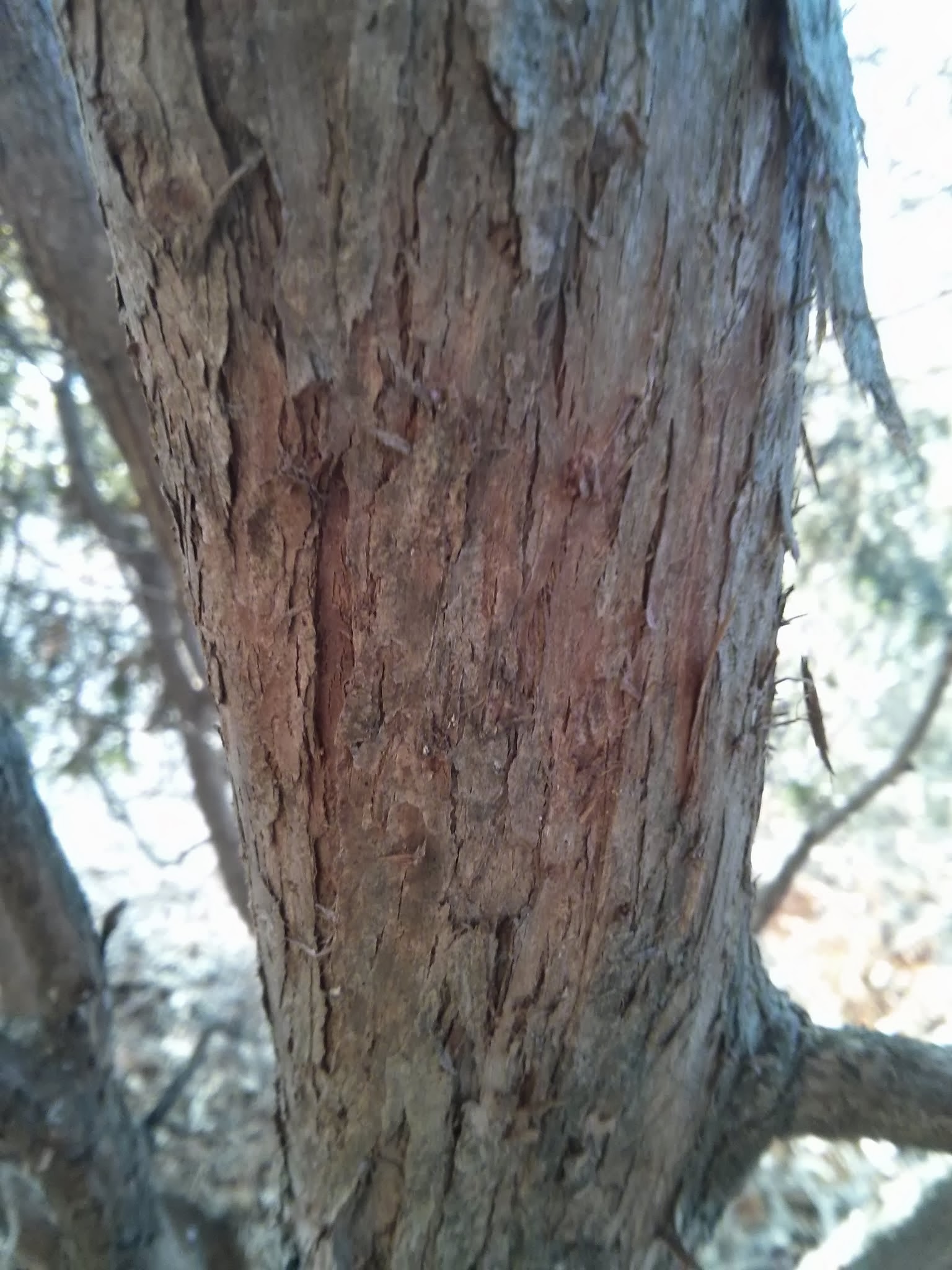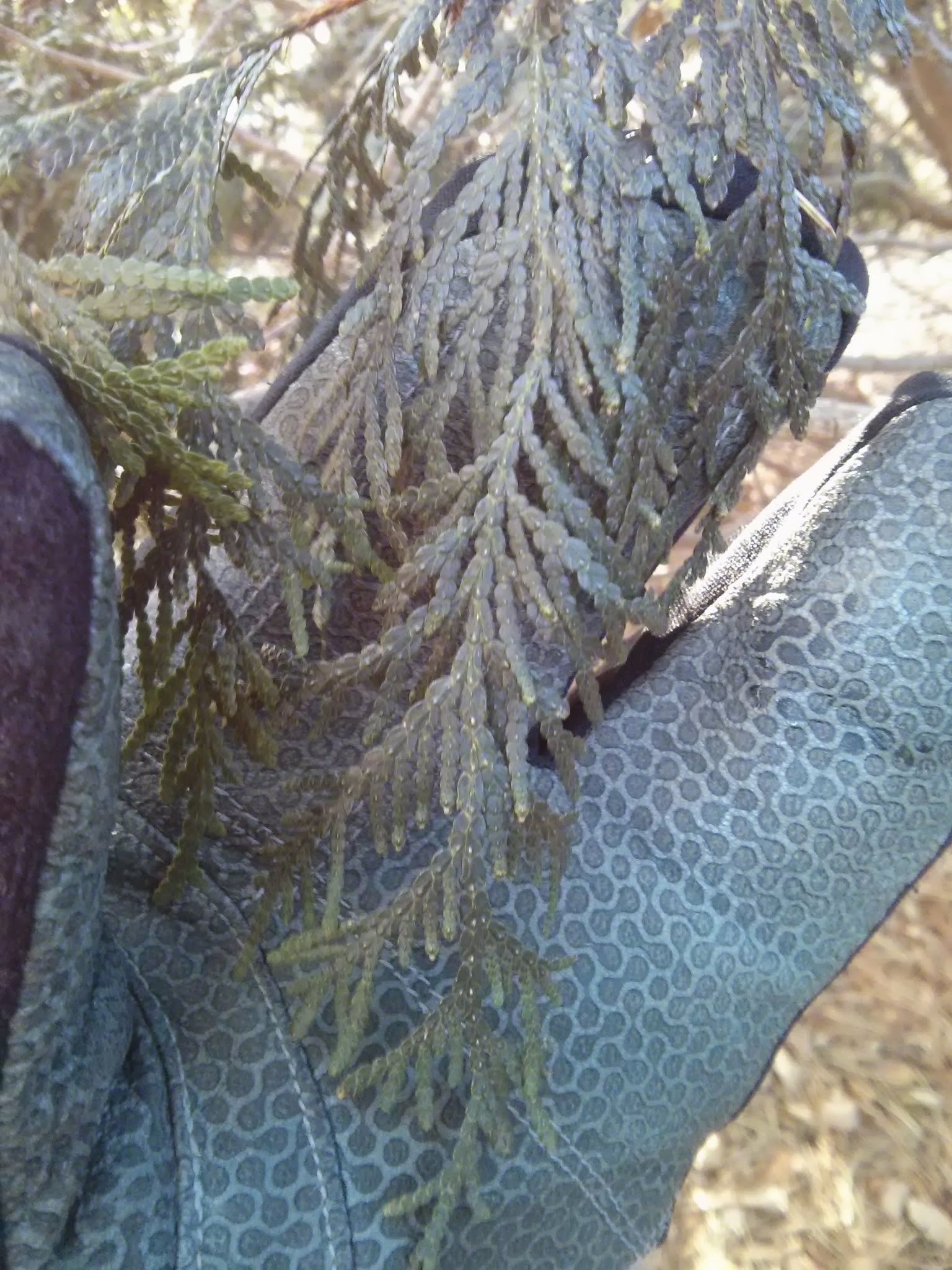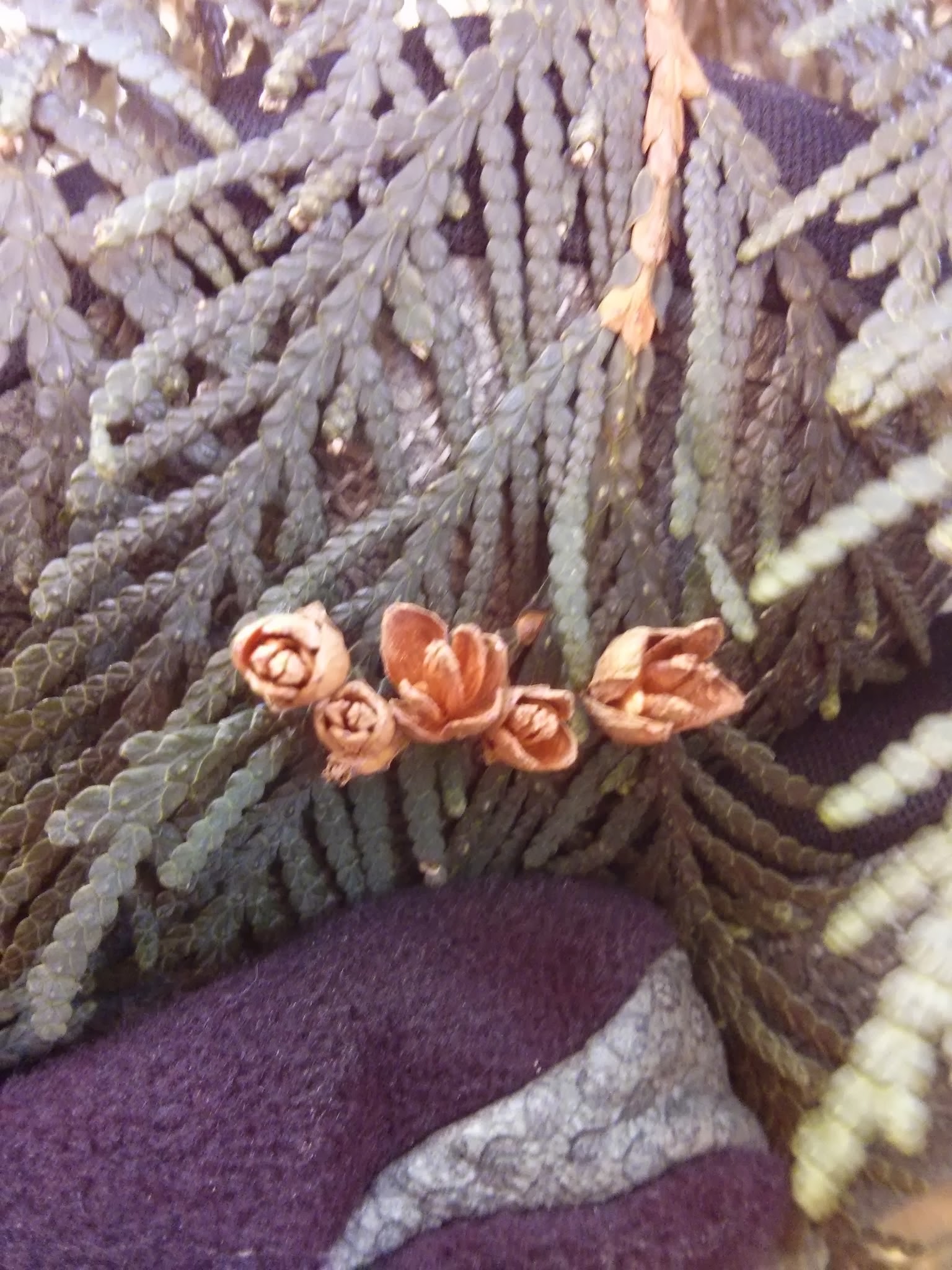Common Name: northern white cedar, arborvitae
Scientific Name:
Family: Cupressaceae
Genus: Thuja
Species: occidentalis
Hardiness Zone: 2 to 7
Height: 20 to 40 ft
Width: 10 to 15 ft
Common characteristics:
The northern white cedar is a shrub to small tree, heights can reach 20' to 40' tall and 10' to 15' wide. Its trunk is often twisted, strongly tapered, and frequently divided into two or more direct stems. Its branches are short and nearly horizontal which sometimes forms almost impenetrable thickets because dead branches are very stiff and persistent. The bark is gray to reddish-brown, separating in long, vertical, narrow shreddy strips. Its leaves are scale-like and are green to yellowish-green and grow flat. The white cedar has a pleasant, aromatic scent when crushed. It has a small, oblong yellowish-brown cone that ripens in the fall of the first year, growing in large clusters on the ends of branches.
Where it grows:
Prefers alkaline soils and moist, well-drained soils. It will tolerate dry sites and road salts. The white cedar prefers cooler sites that experience full sun to partial shade.
How it’s used:
There are over 120 different cultivars of the northern white cedar currently available from nurseries.
Ecosystem services:
Used as habitat by birds and small mammals, and as food by browse animals.
Where it is native to:
It is native to the north, northeastern, and eastern United States. Predominantly in cooler climates.
Known Varieties and Their Traits:
Anna's Magic Ball Eastern arborvitae (Thuja occidentalis ‘Anna van Vloten’) is a dwarf cultivar, 12 to 18 inches high and wide, and globe shaped. Foliage is golden.
Brabant Eastern arborvitae (Thuja occidentalis ‘Brabant’) has a narrow, spire-like form, 12 to 15 feet high and 3 to 4 feet wide. It maintains good green color in winter.
Brandon Eastern arborvitae (Thuja occidentalis ‘Brandon’) is another narrow cultivar, 12-15 feet high by 6 to 8 feet wide. Foliage is resistant to winter burn.
Danica Easter arborvitae (Thuja occidentalis ‘Danica’) is a small, compact, ball-shaped shrub, growing 2 feet high and wide. Tolerates light shade and wet sites. Useful in foundation plantings, rock gardens, low hedges, or as accent plant.
Emerald Green Eastern arborvitae (Thuja occidentalis ‘Smaragd’) is a small tree with a narrow, pyramidal habit, growing 10 to 15 feet high and 3 to 4 feet wide. Retains green color in winter. Tolerates heat, cold, and wet sites. Useful as a specimen plant, in groups, or as a hedge.
Fire Chief™ Eastern Arborvitae (Thuja occidentalis ‘Congabe’) is globe shaped and is only 4 feet high and wide at maturity. Foliage is red-tipped.
Globosa Eastern arborvitae (Thuja occidentalis ‘Globosa’) is a medium-sized, broadly rounded shrub, growing 4 to 6 feet high and wide. Foliage may turn slightly gray-green in winter. Useful as foundation plantings and as a hedge or accent plant.
Golden Globe Eastern Arborvitae (Thuja occidentalis ‘Golden Globe’) is a compact, ball-shaped shrub with yellow-green foliage. Can tolerate light shade and wet sites. Useful in foundation plantings, rock gardens or low hedges, or as accent plant.
Hetz' Midget Eastern arborvitae (Thuja occidentalis ‘Hetz' Midget’) is a low shrub form, growing 3 to 4 feet high and wide. Useful in foundation plantings, rock gardens, low hedges, as accent plant, or in containers, though containers must be insulated to protect roots in winter.
Hetz' Wintergreen Eastern arborvitae (Thuja occidentalis ‘Hetz' Wintergreen’) is narrow and columnar, 20 to 30 feet high and 5 to 10 feet wide, with a central leader. Useful as a specimen or, in rows, for hedges, screens, or windbreaks.
Holmstrup Eastern arborvitae (Thuja occidentalis ‘Holmstrup’) is a compact shrub with an upright habit, growing 6 to 8 feet high and 2 to 3 feet wide. Retains green color in winter. Tolerates poor drainage and alkaline soils. Deer resistant. Useful as a specimen plant, foundation plant, in groups, or as a low hedge.
Linesville Eastern arborvitae (Thuja occidentalis ‘Linesville’) is a very small, globe-shaped cultivar, growing 2 to 3 feet high and wide.
Mr. Bowling Ball Eastern arborvitae (Thuja occidentalis ‘Bobazam’) is a small, compact, rounded shrub, growing just 2 to 3 feet high and wide. Dense, fine, soft, scale-like, gray-green foliage. Useful in foundation plantings or rock gardens, as an accent plant or in containers, though container must be insulated to protect roots in winter.
Nigra Eastern arborvitae (Thuja occidentalis ‘Nigra’) has dark green foliage that persists all winter. Narrow and pyramidal, growing 25 to 30 feet high and 5 to 8 feet wide. Tolerates temporary flooding, heat and drought once established. Exceptionally cold-hardy. Useful as a specimen or accent or in groups as a hedge, screen, or windbreak.
North Pole® Eastern arborvitae (Thuja occidentalis ‘Art Boe’) has a narrow, upright habit , 12 to 15 feet high and 3 to 5 feet wide.
Pyramidalis Eastern arborvitae (Thuja occidentalis ‘Pyramidalis’) is a tall, narrow, pyramidal tree, growing 20 to 30 feet high and 5 to 8 feet wide. Requires moist soil and tolerates temporary dry to wet sites, but does not tolerate drought. May suffer from winter burn if not sheltered from strong winds.
Technito® Eastern arborvitae (Thuja occidentalis ‘BailJohn’) is a compact cultivar, 8 to 10 feet high and 4 to 5 feet wide, maintains good color in winter.
Techny Eastern arborvitae (Thuja occidentalis ‘Techny’) is a broadly pyramidal small tree or large shrub, growing 10 to 15 feet tall and 6 to 10 feet wide. Dark green doliage retains color in winter. Extremely cold hardy and tolerant of alkaline soils. Useful as a specimen plant, in groups or screens, or as a hedge. Also sold under the name 'Mission'.
Wareana Eastern arborvitae (Thuja occidentalis ‘Wareana’) is broadly pyramidal and rounding with age, growing 8 to 10 feet high and 6 to 8 feet wide. The leathery foliage is tinged with blue. Tolerates wet soil and is cold hardy. Useful as a specimen or accent, good for hedges and also for foundation plantings.
Woodwardii Eastern arborvitae (Thuja occidentalis ‘Woodwardii’) is a rounded shrub form, growing 3 to 6 feet high and wide. Dense, soft, scale-like, green foliage. Tolerates light shade and wet sites. Useful as a specimen or in groups.
Problems:
Insect pests can include bagworms, mealybugs, scales, leaf miners, and spider mites. Leaf blight and canker can also occur. In exposed areas is could experience winter scorch.
References:


